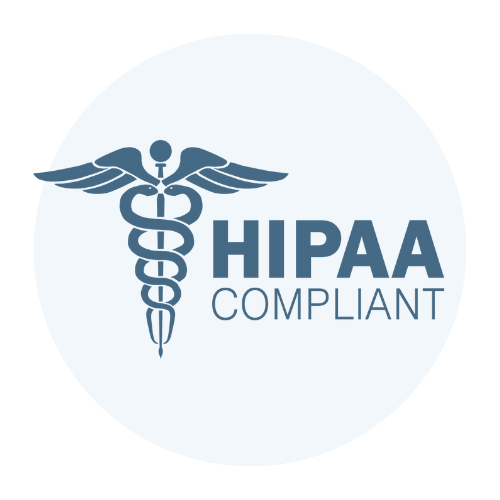Educational Institutions Also Need To Pay Attention To Cybersecurity, Here’s Why
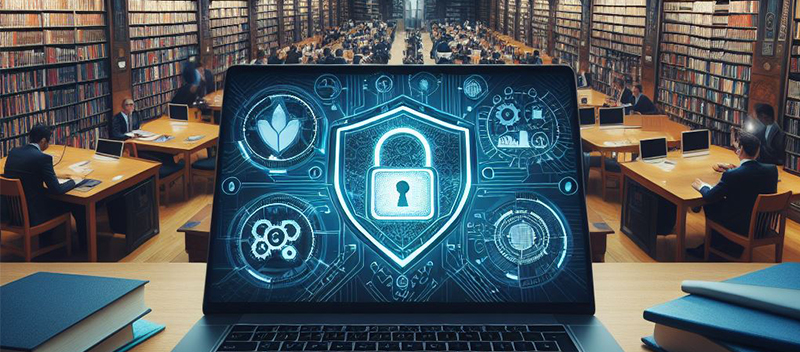
The Education Cybersecurity Summit 2023 took place in New York City on December 8, 2023. This event allowed technology professionals in the government and educational sectors to learn about the latest efforts to defend against cyber threats. This issue becomes even more pressing with the rise in remote learning and the increased use of digital platforms in education. However, educational and non-profit organizations may mistakenly perceive themselves as less susceptible to cyber threats. Their vast data accumulation, including confidential information like student records, research findings, payment card numbers, healthcare details, and social security numbers, makes them attractive targets for hackers. With industry experts who deeply understand the unique challenges facing educational and non-profit entities, TrustNet can help these organizations mitigate risks and provide the most effective and efficient security and compliance solutions. Navigating Cybersecurity in Education In the digital age, cybersecurity challenges have emerged as significant concerns within the educational sector. Here’s a closer look at these aspects: Compliance Risks: Educational institutions are bound by various government and industry standards. Non-compliance can tarnish the institution’s reputation and erode its stakeholders’ trust, including students, parents, staff, and partners. Data Privacy: Schools and universities amass a wealth of sensitive data, encompassing personal identification information, academic records, and health records. Data security safeguards the trust of students, staff, and parents. Any breach can lead to identity theft or academic dishonesty, damaging individual lives and the institution’s reputation. Phishing: Phishing attacks, where cybercriminals deceive individuals into divulging sensitive information or installing malicious software, are an escalating threat in education. By successfully phishing, these criminals can gain unauthorized access to this data, breach privacy, and compromise data security. This stolen data can be used for identity theft, fraud, or even sold on the dark web, underlining the importance of robust data security measures in educational settings. Educational institutions can employ several preventive measures to enhance cybersecurity and comply with key regulations and standards: HIPAA (Health Insurance Portability and Accountability Act): Institutions handling health information must adhere to HIPAA regulations to safeguard the privacy and security of such data. PCI DSS (Payment Card Industry Data Security Standard): Schools and universities processing card payments must abide by PCI DSS guidelines to protect cardholder data. HITECH (Health Information Technology for Economic and Clinical Health Act): Institutions dealing with electronic health records should comply with HITECH to promote the safe use of health information technology. JCAHO (Joint Commission on Accreditation of Healthcare Organizations): Schools with health programs or clinics may need to meet JCAHO standards to protect health information. After compliance with these regulations, additional preventive measures include: Data Encryption: Encrypting data can thwart cyber attackers from accessing the data that institutions send and receive. Multi-Layered Security Strategy: Implementing privileged access security solutions helps monitor and control system access, preventing data breaches. Ransomware Prevention: Recognizing why educational institutions are common targets for ransomware attacks and taking steps to prevent such incidents is crucial. For more on our cybersecurity and compliance services, Click Here Securing the Future: The Imperative of Cybersecurity in Education Ultimately, cybersecurity is critical for all sectors, including education. Despite not being traditional targets, schools and universities must remain vigilant due to the sensitive data they manage. A data breach can have devastating consequences, impacting the institution’s reputation and the privacy and future prospects of countless students. Additionally, adherence to several regulations is also essential for educational institutions. By understanding and incorporating these standards into their operational processes, schools and universities can bolster their defense against cyber threats. However, navigating the intricate landscape of cybersecurity can indeed be daunting. This is where TrustNet steps in as an indispensable ally. With a partnership leveraging our cybersecurity and compliance expertise, we offer comprehensive solutions tailored to safeguard your educational institution effectively. Schedule a call with TrustNet today.
Looking Back: Key Cybersecurity Lessons from 2023

As we bid farewell to 2023, it’s clear that the year has been a formative one in the realm of cybersecurity. The landscape has never been more complex because of increased sophisticated cyber threats and the continued exploitation of human vulnerabilities. Simultaneously, new legislation around the globe has underscored the critical importance of cybersecurity, pushing organizations to adapt and remain agile. These developments present a compelling case for continuous advancement in our cybersecurity strategies. Whether investing in advanced threat detection tools, adopting comprehensive data-centric security models, or enhancing cybersecurity education and awareness, the lessons from 2023 highlight the need for proactive and adaptive approaches to stay ahead of the ever-evolving cyber threats. Major Cybersecurity Events and Trends of 2023 The year 2023 has been tumultuous for data security, with the number of data breaches and leaks surpassing those of the previous year. High-profile companies have been particularly affected, suffering both financial and security repercussions. Among the most significant breaches were MOVEit and Barracuda Email Security Gateway. Russian-speaking group Clop exploited a critical vulnerability in Progress’ MOVEit file transfer tool, launching a campaign believed to have started in late May. The attacks were unique as they didn’t deploy encryption like traditional ransomware attacks but instead threatened to leak stolen data on the dark web if the ransom wasn’t paid. Although it’s unclear which companies paid the ransom, estimates suggest Clop may have received between $75 million and $100 million from the attacks. Simultaneously, Barracuda experienced an attack campaign that leveraged a critical vulnerability in their Email Security Gateway (ESG) appliances, with exploitation dating back to October 2022. 5% of active ESG appliances were believed to be compromised, leading Barracuda to recommend that customers replace their affected devices. As of August, Barracuda continued to recommend replacement of compromised appliances, offering free replacements to impacted customers. Additionally, the rise of AI-driven attacks and the deepfake menace are emerging threats in today’s digital landscape. Deepfake technology, which uses artificial intelligence to create hyper-realistic but entirely fake video content, poses significant cybersecurity risks. Non-consensual pornography is a major threat posed by deepfakes, accounting for up to 96% of deepfakes on the Internet. Deepfakes also utilize Generative Adversarial Networks (GANs), an AI-powered neural network, to create synthetic media. This growing threat is particularly significant as we approach the 2024 U.S. elections, with AI-generated threats like deepfakes being identified as top security issues. In response, security professionals are employing AI to protect against these AI-driven attacks. According to a report from the U.S. Cybersecurity and Infrastructure Security Agency (CISA), FBI, and NSA, have provided recommendations for identifying and responding to deepfake threats. The authorities suggest several strategies to leverage technology for detecting deepfakes and establishing media authenticity. They also encourage organizations to safeguard the personal data of significant individuals at risk. Key Lessons for Businesses Businesses must anticipate and actively protect against emerging threats, such as AI-driven attacks and deepfakes. This involves implementing cutting-edge detection technologies, safeguarding sensitive data, and formulating contingency plans for potential breaches. The digital landscape is complex, requiring businesses to stay informed and proactive. This implies maintaining a pulse on the latest cybersecurity trends and threats and instituting regular training protocols to equip staff with the skills to spot potential threats. Businesses must also update security protocols in line with technological advancements and foster a culture of cybersecurity awareness within the organization. Adherence to evolving regulatory requirements is more than just a legal mandate; it’s a crucial component of robust cybersecurity measures. These regulations are designed to ensure businesses employ best practices for data protection and digital security. By understanding these requirements, businesses can implement the most current and effective cybersecurity strategies, including data encryption, multi-factor authentication, regular system updates, and timely vulnerability assessments. Compliance helps businesses avoid potential legal issues arising from data breaches or non-compliance penalties and fosters trust with customers and stakeholders by demonstrating a commitment to data protection. Significantly, adhering to these regulations enhances a business’s overall security posture, enabling it to stay ahead of emerging threats and adapt its defenses accordingly, thus maintaining a resilient and robust security infrastructure. For more on our cybersecurity and compliance services, Click Here Cybersecurity Retrospective: Key Takeaways from 2023 The cybersecurity landscape of 2023 was a testament to the continuous evolution of digital threats and the corresponding need for robust, proactive defenses. The year was marked by developments that served as crucial lessons businesses must carry forward. Adopting a risk-informed approach to decision-making, fostering cross-sector collaborations, and integrating cybersecurity into core operations emerged as essential strategies. Partnering with cybersecurity and compliance experts like TrustNet is critical to this journey. With our comprehensive suite of services, TrustNet can help businesses navigate the complex cybersecurity terrain, ensuring compliance with evolving regulations while fortifying defenses against potential threats.
Enhancing Security through Adaptive Multi-Factor Authentication: A TrustNet Perspective
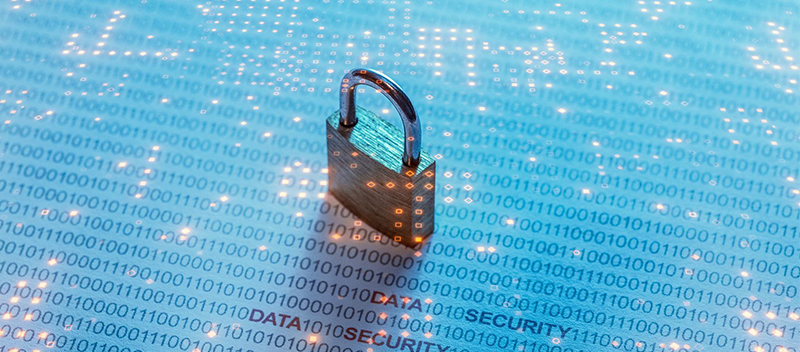
In the ever-evolving landscape of cybersecurity, the need for robust authentication mechanisms has become paramount. Traditional approaches, such as password-based systems, are no longer sufficient to counter the increasingly sophisticated tactics employed by cyber adversaries. As organizations grapple with the challenge of fortifying their digital perimeters, Adaptive Multi-Factor Authentication (AMFA) emerges as a cutting-edge solution, offering a dynamic and context-aware approach to user authentication. Understanding Adaptive Multi-Factor Authentication Adaptive Multi-Factor Authentication is a sophisticated evolution of the conventional Multi-Factor Authentication (MFA) model. While MFA mandates the use of multiple authentication factors for every access attempt, AMFA introduces a layer of intelligence by dynamically adjusting the authentication requirements based on contextual factors and risk assessments. Contextual Factors and Risk Assessment AMFA considers a multitude of contextual factors during the authentication process. These include user behavior, device characteristics, location, time of access, and the sensitivity of the resource being accessed. By leveraging advanced risk analysis algorithms, the system evaluates these factors and assigns a risk score to each authentication attempt. This risk score becomes instrumental in determining the appropriate level of authentication needed. Talk to our experts today! Adaptive Authentication in Action The adaptability of AMFA shines through in its response to varying risk levels. For instance, if a user attempts to access a routine system from a familiar device, during regular working hours, and from a known location, the risk score may be deemed low. In such cases, the system might only request a single authentication factor, such as a password. Conversely, if the access attempt originates from an unfamiliar device, at an unusual time, and from a geographically distant location, the risk score would be elevated, triggering the need for additional authentication factors, such as a biometric scan or a one-time passcode. Benefits of Adaptive Multi-Factor Authentication Enhanced Security: The dynamic nature of AMFA ensures that the authentication mechanism adapts to the specific risk profile of each access attempt. This significantly reduces the likelihood of unauthorized access, providing a robust defense against potential security breaches. Improved User Experience: Unlike rigid authentication methods, AMFA strikes a balance between security and user experience. Legitimate users are spared unnecessary authentication hurdles when accessing routine systems, while heightened security measures are seamlessly activated in response to elevated risk scenarios. Real-time Risk Mitigation: By continuously monitoring contextual factors and recalculating risk scores, AMFA enables organizations to respond swiftly to emerging threats. This real-time risk mitigation capability is instrumental in preventing unauthorized access attempts before they can compromise sensitive information. In the pursuit of strengthening cybersecurity measures, Adaptive Multi-Factor Authentication (AMFA) stands out as an evolving innovative solution. Its capacity to adjust authentication criteria in real-time, considering contextual variables and risk assessments, offers a precise and efficient method for user authentication. The adoption of AMFA allows organizations to reinforce their security defenses, effectively countering cyber threats in an environment where adaptability is crucial for preserving the integrity of digital ecosystems.
The Growing Threat of Phishing Attacks: Preparing for 2024
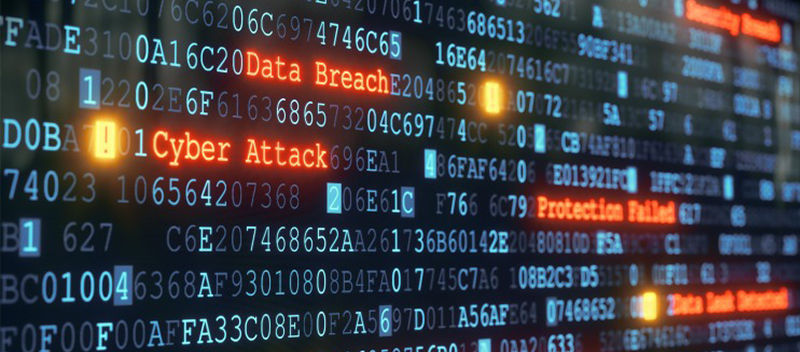
As we move forward into the future, the threat of cyber attacks looms more prominent than ever. Among these, phishing attacks are a particularly cunning form of cybercrime rapidly growing in frequency and sophistication. By 2024, these attacks will have evolved far beyond what we can handle. Therefore, understanding and mitigating the risk of phishing attacks is now more crucial than ever. This article aims to provide a comprehensive guide on this looming cybersecurity threat. We’ll delve into the evolution of phishing attacks, exploring how they’ve changed over time and what new forms they may take. Next, we’ll discuss preventative measures, detection techniques, and effective response strategies to manage and recover from phishing attacks. The Evolution of Phishing Attacks Phishing attacks have rapidly evolved and significantly threaten individuals and businesses. According to reports, an estimated 3.4 billion phishing emails are sent daily, amounting to over a trillion emails yearly. These emails are designed to appear as if they’re from trusted senders, tricking recipients into divulging sensitive information. Email impersonation, a popular tactic used in phishing attacks, accounts for approximately 1.2% of all global email traffic. This method involves cybercriminals pretending to be a legitimate entity to gain the trust of their victims. Regarding data breaches, around 36% involve phishing, demonstrating the significant role these attacks play in compromising data security. In 2022, 84% of organizations were targets of at least one phishing attempt, a 15% increase from the previous year. This startling statistic underscores the magnitude of the phishing threat facing businesses today. Since 2019, phishing attacks have seen a staggering annual increase of over 150%. The following numbers illustrate this growth: 2019: 779,200 attacks observed 2020: 1,845,814 attacks observed 2021: 2,847,773 attacks observed 2022: 4,744,699 attacks observed Phishing attacks will continue to evolve in 2024. Industry experts predict that phishing scams will become even more sophisticated and prevalent. Even inexperienced threat actors are expected to rapidly produce emails for phishing thanks to generative artificial intelligence. Mobile-specific threats are also predicted to increase in 2024. These attacks target users on their mobile devices, exploiting the increasing reliance on smartphones for communication and online transactions. As we face a predicted $10.5 trillion in cyber attack damages, it’s clear that the threat landscape is swiftly evolving with more sophisticated and automated phishing attacks. Preventative Measures There are several proactive steps that individuals and businesses can undertake to shield themselves against phishing attacks. Here are some key preventative strategies: Employee Training: One of the most effective ways to prevent phishing attacks is through regular security awareness training. This includes teaching staff how to identify suspicious emails and avoid clicking on unverified links or attachments. Email Authentication Protocols: Implementing email authentication protocols like Sender Policy Framework (SPF), DomainKeys Identified Mail (DKIM), and Domain-based Message Authentication, Reporting & Conformance (DMARC) can help prevent spoofed or fraudulent emails from reaching users’ inboxes. Modern Email Protection Gateways: Modern email protection gateways use advanced threat intelligence, machine learning, and automation to detect and block phishing emails before they reach users. Two-Factor Authentication (2FA): Enabling 2FA adds an extra layer of security by requiring users to verify their identities through a second factor, such as a text message or mobile app notification. Regular Software Updates: Keeping software and systems updated is critical for maintaining security. Cybercriminals often exploit known vulnerabilities in outdated software. By adopting these best practices, individuals and businesses can significantly reduce their risk of falling victim to phishing scams. For more on our cybersecurity and compliance services, Click Here Detection Techniques Effective detection techniques are crucial in safeguarding systems from potential cybersecurity threats. Here are some of the key techniques: Regular Penetration Testing: This is an authorized simulated attack on a system, conducted to evaluate the security of the system. The pen test identifies weaknesses (also referred to as vulnerabilities) that could be exploited by attackers. Intrusion Detection Systems (IDS): IDS, provided in managed security services, are designed to detect unusual activity or violations of policy. They work by monitoring system and network traffic, providing alerts when suspicious activity is detected. User Behavior Analytics (UBA): UBA uses machine learning algorithms to track, collect, and assess user data and activities to detect potential malicious behavior. By establishing a baseline of ‘normal’ activity for each user, UBA can identify anomalies that may indicate a threat. Firewalls: A firewall acts as a barrier between a trusted and an untrusted network. It controls incoming and outgoing network traffic based on predetermined security rules. Antivirus Software: Antivirus software helps protect against malware, including phishing threats, by detecting, quarantining, and removing malicious programs. Response Strategies Effective response strategies are crucial in mitigating the impact of phishing attacks. Here are some key strategies: Incident Response Planning: This involves a predetermined set of instructions or procedures to detect, respond to, and limit the effects of a cybersecurity breach or attack. The plan should also include steps for communicating with the public about the incident. Collaboration with Industry Peers: Sharing threat intelligence and best practices among industry peers can strengthen defenses against phishing attacks. Collective defense is often more effective than individual efforts, as it allows businesses to learn from each other’s experiences and develop more robust security measures. Working with Security Experts: Cybersecurity and compliance leaders like TrustNet can enhance an organization’s cybersecurity posture with our expertise and complete solutions. We provide a wide range of services, from penetration testing, cyber risk assessment, vendor risk assessment, security awareness training, and more.
Peering into the Future: TrustNet’s Vision for Cybersecurity in 2024
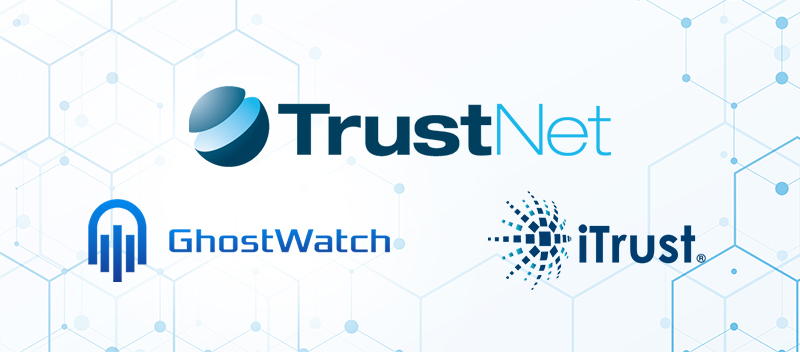
TrustNet, a leading global provider of cybersecur services span managed security, consultingity and compliance services since 2003. Our, and compliance, making us a strategic partner for medium to large businesses. At TrustNet, our mission is to help them build trusted relationships with their customers, partners, and employees. In today’s digital age, staying one step ahead of cyber threats is not just an option; it’s a necessity. The implications of a cyber breach can be catastrophic, ranging from financial losses to reputational damage. With cybercriminals becoming more sophisticated, the need for robust cybersecurity measures has never been more critical. This is where TrustNet’s cutting-edge solutions ensure that these businesses are well-equipped to face tomorrow’s cyber challenges. Keep reading as we look into TrustNet’s vision for cybersecurity in 2024, detailing future trends, challenges, and strategies to safeguard digital assets in an ever-evolving cyber landscape. Emerging Technologies The future of cybersecurity is intertwined with several emerging technologies: Artificial Intelligence (AI) and Machine Learning (ML): AI and ML are increasingly used to predict and prevent cyber threats. They provide the ability to analyze large volumes of data to identify patterns and detect anomalies, significantly outpacing human capabilities in these areas. This can help organizations to identify potential threats before they become serious issues. Quantum Computing: Quantum computing has the potential to revolutionize encryption methods, creating systems that are almost impossible to break. This could provide a level of security that far surpasses anything currently available, making it much harder for cybercriminals to gain unauthorized access to systems. Blockchain Technology: Best known for powering cryptocurrencies like Bitcoin, blockchain technology has much to offer in cybersecurity. Its decentralized nature makes it difficult for cybercriminals to launch successful attacks, and its use of cryptographic techniques provides high transparency and integrity. It can secure transactions, verify identities, and ensure data integrity. Other emerging technologies include: Behavioral Analytics: This technology involves analyzing data patterns to identify suspicious behavior. It can detect insider threats, fraud, and advanced persistent threats. Cloud Encryption: As more and more data is stored in the cloud, encryption of this data is becoming increasingly important. Cloud encryption allows for the secure transmission and storage of data. Context-Aware Security: This involves considering the context of user actions to make real-time security decisions. It can provide a more nuanced approach to security, reducing false positives and improving threat detection. As we move towards 2024, these emerging technologies are expected to reshape cybersecurity. AI and ML, for example, are set to become even more sophisticated, potentially automating many aspects of threat detection and response. Quantum computing could start to make ‘unhackable’ encryption a reality, while blockchain could secure everything from financial transactions to supply chains. Meanwhile, the rise of internet-connected devices (IoT) and increasing reliance on cloud storage will likely drive demand for advanced security solutions like behavioral analytics, cloud encryption, and context-aware security. These technologies will help protect businesses against threats and help them build trust with customers, partners, and employees. For more on our cybersecurity and compliance services, Click Here Growing Threats Cybersecurity threats are ever-evolving, and 2023 has seen a wide variety of such threats. Here are some of the notable ones: Social Engineering: This technique involves manipulating individuals into revealing confidential information or conducting actions compromising security. It often relies on tricking people into breaking standard security procedures. Third-Party Exposure: Many businesses face threats due to the weak security postures of their third-party partners. Cybercriminals can exploit these vulnerabilities to gain unauthorized access to data. Configuration Mistakes: Incorrectly configured systems can leave vulnerabilities that hackers can exploit. This includes misconfigurations in cloud services, open-source databases, and application development frameworks. Poor Cyber Hygiene: Inadequate security practices, such as weak passwords and a lack of regular updates, can make systems easy targets for cybercriminals. Cloud Vulnerabilities: As more data is stored in the cloud, it becomes an attractive target for cybercriminals. Cloud vulnerabilities can arise from poor access management, insecure interfaces and APIs, and inadequate data encryption. Malware and Ransomware: These continue to be significant threats. Cybercriminals are constantly developing new variants of malware and ransomware to evade detection and cripple systems for financial gain. Phishing: Phishing remains one of the most common cybersecurity threats. It often involves sending fraudulent emails that appear to come from reputable sources to steal sensitive data like credit card numbers and login credentials. Data Breaches: Data breaches occur when cybercriminals gain unauthorized access to data. Such incidents can lead to massive financial losses and damage to reputation. Risk from Hybrid or Remote Work: The shift to remote and hybrid work models has expanded the attack surface for cybercriminals, making networks more vulnerable. Mobile Attacks: With the increased use of mobile devices for work, attacks targeting these devices, including mobile malware and Wi-Fi interference, have also risen. Looking ahead to 2024, several emerging threats pose significant challenges: Supply Chain Compromise: As businesses become increasingly interconnected, there’s a growing risk that cybercriminals could target one organization as a way to access another. Advanced Disinformation Campaigns: The spread of false information can cause significant harm and is expected to become an increasing threat. Rise of Digital Surveillance: As technology continues to evolve, so too do the methods used by cybercriminals. There’s a growing concern that they could increasingly turn to digital surveillance to gather information. Unpatched Operating Systems: Cybercriminals are expected to continue exploiting known vulnerabilities in unpatched operating systems. Data Theft and Ransom Attacks: These are likely to become even more sophisticated, with cybercriminals using new tactics to steal data and demand ransom. TrustNet’s Strategies for the Future At TrustNet, we take pride in our comprehensive approach that combines cutting-edge technology, deep industry expertise, and proactive strategies. Our dedication to providing top-notch cybersecurity solutions has earned us the trust of many businesses worldwide. A crucial part of our cybersecurity strategy involves leveraging innovative services such as GhostWatch and iTrust. Here’s a closer look: GhostWatch: GhostWatch helps clients build trust and confidence. As a leading provider of managed compliance and security services, GhostWatch is
Predicting the Future: Top Cybersecurity Trends for 2024

Key Takeaways This article provides valuable insights for cybersecurity professionals, IT decision-makers, business executives, and anyone interested in staying informed about the latest cybersecurity trends and best practices. It underscores the potential impact of emerging trends like the persistence of ransomware attacks, the prominence of the Zero Trust model, and the importance of Identity and Access Management on organizations. The article also offers practical measures to mitigate associated risks, emphasizing the need for robust cybersecurity measures, employee training, and staying updated with evolving cyber insurance requirements. As the digital world continues to expand, so does the importance of cybersecurity. With growing technological advancements, we are witnessing an evolution in threats that challenge the security of our data and systems. Cybersecurity is no longer a luxury or an afterthought; it has become necessary in our interconnected world. The rapid proliferation of technologies like AI, IoT, and cloud computing has created new vulnerabilities, making securing systems more complex. Consequently, cybersecurity is about defending against threats and enabling businesses to innovate and grow without fear of compromise. This critical field is increasingly shaping our future, demanding our attention and preparedness for the evolving cyber landscape. Top Cybersecurity Trends for 2024 1. Cybersecurity Skills Crunch The cybersecurity landscape faces a significant challenge in 2024: a persistent shortage of skilled professionals. This issue has intensified, with a need for more personnel possessing the necessary expertise to safeguard enterprises from cyber threats. Recent research reveals that 54 percent of cybersecurity experts believe the detrimental impacts of this skills gap on their organizations have worsened over the last two years. However, solutions are emerging. Anticipated efforts to address this pressing concern include ongoing salary increments for skilled individuals, making the field more attractive for prospective talent. Additionally, there’s an expected increase in investments towards training, development, and upskilling programs, aiming to build a strong pipeline of competent professionals ready to meet the evolving cybersecurity challenges. 2. Attacks Against Cloud Services The digital age has significantly migrated business data, processes, and infrastructure to cloud computing. This transition, while offering numerous benefits such as scalability, cost-efficiency, and accessibility, also brings with it new challenges and threats. As businesses increasingly rely on the cloud for their operations, these platforms become attractive targets for cyber attackers. The vulnerabilities can range from misconfigured storage buckets to sophisticated attacks designed to exploit weaknesses in cloud security architecture. To mitigate these risks, businesses must implement a mature, streamlined cloud governance model. Such a model encompasses robust security protocols, clear guidelines for access control, and regular audits of cloud resources. A well-defined cloud governance strategy helps maintain the integrity and confidentiality of data and accelerates security response capabilities. Thus ensuring that businesses can promptly address any potential breaches, minimizing damage and downtime. 3. Rise in IoT Devices The exponential growth of Internet of Things (IoT) devices is reshaping our daily lives, providing increased interconnectivity and internet accessibility. However, this proliferation also brings more potential vulnerabilities that cybercriminals can exploit. The ongoing work-from-home phenomenon has further accentuated these security risks, as workers often utilize inadequately secured equipment for connecting and sharing data. Unfortunately, the design of these devices frequently prioritizes user-friendliness and convenience over robust security measures, leading to potential risks arising from weak security protocols and passwords. This situation underscores the urgent need to improve the security of IoT devices and the networks they connect to. Despite long-standing awareness of these vulnerabilities, the industry’s reluctance to promptly adopt IoT security standards continues to make it a weak point in cybersecurity. As the integration of IoT devices into our daily lives continues to increase, the focus on reinforcing their security must keep pace to ensure both personal and professional data remain protected. 4. AI-driven Cyber Attack Surge There’s a growing concern regarding the proliferation of increasingly complex and intelligent AI-driven cyber assaults. In this new wave of cybersecurity threats, cybercriminals are turning to AI to automate attacks, making them harder to detect and prevent. AI’s advanced capabilities are used to pinpoint software vulnerabilities, craft convincing phishing emails, and execute highly targeted ransomware attacks. These developments have intensified the adversarial landscape, marking a shift in the sophistication and unpredictability of cyber threats. In response to this escalating challenge, cybersecurity professionals are also harnessing the power of AI. They’re leveraging AI and machine learning to detect and respond to threats more effectively, creating a dynamic and evolving battleground. AI in cybersecurity allows for the automation of threat detection, faster response times, and predictive analytics to anticipate potential attacks. This level of vigilance is necessary in the face of adversaries who are equally equipped with AI capabilities. 5. Zero Trust Security The Zero Trust model is a prominent security framework that assumes no inherent trust within its network. It operates on the principle of “never trust, always verify,” regardless of whether the access attempt comes from inside or outside the organization. Instead of assuming everything behind the corporate firewall is safe, the Zero Trust model requires all users, even those already inside the organization’s network, to be authenticated, authorized, and continuously validated for security configuration and posture. The continued prominence of the Zero Trust model can be attributed to its effectiveness in today’s increasingly complex and perimeter-less digital environment. The model is particularly suited to address the security challenges of remote work, bring-your-own-device (BYOD) policies, and cloud technology. This is where traditional security perimeters no longer apply. Organizations are better equipped to defend against external and internal threats by adopting a Zero-Trust approach. 6. Ransomware Attacks Ransomware attacks remain a pervasive and persistent threat in the digital landscape. These attacks, which involve malicious software that encrypts a victim’s files and then demands payment to restore access, can have devastating consequences. The financial implications of ransomware attacks are often severe. This includes costs from the demanded ransom and the downtime, loss of data, and reputational damage. The potential for disruption to operations is significant, as these attacks can immobilize critical systems and halt business processes. Given the persistence
Cybersecurity Compliance: A Profit Multiplier for Accounting Businesses
As the accounting sector evolves with technological advancements, it becomes increasingly interconnected with the digital world. While this shift to cloud-based systems has simplified access and management of financial data, it also introduces substantial security risks. Even robust IT infrastructures are not immune to breaches by threat actors, making protecting internal accounting data a pressing concern. In response to these threats, businesses increasingly use cybersecurity methods and services to identify and address system vulnerabilities. The rising demand has proven that cybersecurity is a crucial tool in today’s world. This article will explore how cybersecurity intersects with the accounting sector and how it can become a profit multiplier. Understanding Cybersecurity Compliance Cybersecurity compliance ensures an organization’s adherence to the myriad of regulations, standards, and laws pertinent to data privacy and information security. A diverse range of organizations must comply with various cybersecurity standards and regulations, including: Healthcare entities must often comply with the Health Insurance Portability and Accountability Act (HIPAA), a regulation that safeguards patient health information. Financial institutions may need to adhere to the Payment Card Industry Data Security Standard (PCI-DSS) regulations protecting credit card data. Retailers and e-commerce businesses accepting online credit card payments might also be required to comply with PCI-DSS regulations. Companies managing the personal data of European citizens could be required to comply with the General Data Protection Regulation (GDPR). Specific industries, such as defense or energy, might be subject to industry-specific regulations and standards like NIST, ISO 27001, or CMMC. For more on our cybersecurity and compliance services, Click Here NIST Cybersecurity Framework Much like financial risks, cybersecurity risks significantly impact an organization’s bottom line. This makes cybersecurity a key component of comprehensive risk management. The Cybersecurity Enhancement Act of 2014 expanded the role of the National Institute of Standards and Technology (NIST) to include the development of cybersecurity risk frameworks. The components are based on pre-existing standards and best security practices from the government and various crucial industry sectors. It’s important to note that the NIST Framework is not a checklist but a guide for assessing risk and addressing security issues. The NIST Cybersecurity Framework comprises three parts that help organizations formulate a thorough cybersecurity strategy: The first component, the framework core, provides guidance information and cybersecurity activities, presenting industry standards to assist organizations in managing cyber risks. The second component, the implementation tier, enables the organization to gauge its current cybersecurity posture, helping it determine the optimal level of standards for its cybersecurity program. The final component, the framework profile, allows the organization to create a plan for mitigating cyber risks aligned with organizational objectives. The NIST framework includes five main functions: identify, protect, detect, respond, and recover. These functions, which must be executed concurrently and continuously, support an organization in managing cybersecurity risk, dealing with threats, and learning from past activities. Implementing NIST Standards in Accounting Businesses The NIST framework integrates best practices for managing cybersecurity risks for your accounting business. It’s not a replacement but a supplement to existing processes. Steps for implementing the NIST framework include: Define organizational objectives: This helps determine the scope and priority of security efforts. Assess your current position: Perform a risk assessment to understand your cybersecurity standing. Identify weaknesses: After gathering information, pinpoint areas of vulnerability. Implement plan: Execute the devised strategy based on the assessment. Remember, cybersecurity is an ongoing process that requires continuous attention. As your accounting business evolves, reassess and update the strategy accordingly. Cybersecurity Compliance in Accounting Businesses Cybersecurity is a critical concern for accounting firms due to several key reasons: High susceptibility: Cyber threats are becoming more sophisticated, with a substantial increase in the frequency of incidents. Responsibility to protect client data: Firms handle sensitive client data, including social security numbers and financial information, which they must safeguard. Significant financial implications: The average cost of a data breach in the U.S. is $9.8 million as of 2023. Ease of hacking: Even individuals with minimal training can launch disruptive attacks, making the risk of cyberattacks even more prevalent. Reputational damage: Beyond monetary loss, cyberattacks can lead to significant reputational damage that can be challenging and costly. Accounting firms handle vast amounts of sensitive data, making them prime targets for cybercriminals. Therefore, not only must these businesses implement robust technological defenses, but they also need to train their workforce to identify and mitigate potential threats. Knowledge of cybersecurity and data governance is also crucial for upholding the integrity of financial data and safeguarding the firm’s reputation. Adhering to cybersecurity standards also ensures transparency and empowers consumers, as the law mandates. Benefits of Cybersecurity Compliance for Accounting Businesses Cybersecurity compliance holds immense benefits for accounting businesses: Safeguarding Client Confidentiality: Accounting firms handle sensitive client data, making cybersecurity crucial to maintain confidentiality. Preventing Financial Loss: Cyberattacks can lead to significant financial loss, which can be controlled through robust cybersecurity measures. Maintaining Regulatory Compliance: Adherence to cybersecurity regulations enhances the firm’s reputation and competitiveness. Protecting Reputation: Effective cybersecurity helps safeguard the firm’s reputation by preventing potential breaches. Business Continuity: In the event of a cyber incident, a robust cybersecurity framework ensures minimal disruption to operations. Consequently, cybersecurity compliance can be a profit multiplier for accounting firms, enhancing client trust, preventing costly breaches, and unlocking new business opportunities with entities requiring stringent security standards. To aid in this endeavor, TrustNet, with our team of industry experts, provides a comprehensive suite of cybersecurity compliance services tailored to your business needs. From implementing robust network security measures to conducting regular audits and penetration tests, TrustNet ensures all aspects of your cybersecurity compliance are fortified.
TrustNet: Facilitating Cybersecurity Compliance for Accounting Businesses
The advent of technology has brought numerous advantages to accounting businesses, offering improved efficiency, accuracy, and speed. However, it has also opened the door to an array of cyber threats that can compromise the integrity and confidentiality of financial data. Accounting firms have become a lucrative target for cybercriminals due to the wealth of sensitive and valuable information they hold. These threats range from phishing attempts and ransomware attacks to sophisticated data breaches. The impact of such attacks extends beyond financial losses, leading to reputational damage and loss of client trust, which can be devastating for any business. As cyber threats evolve in complexity and scale, so does the need for robust cybersecurity measures. This is where TrustNet comes into play. TrustNet can help facilitate cybersecurity compliance for accounting businesses, providing them with the necessary tools and resources to protect their digital assets and maintain the trust of their clients. Understanding Cybersecurity Compliance Cybersecurity compliance refers to the adherence to standards, guidelines, and laws designed to protect data and information systems. It involves implementing controls and measures to guard against cyber threats and ensure data privacy. Compliance in accounting businesses’ primary aim is to ensure that all financial accounting is carried out per accepted standards. It sets a measure to prevent fraud and ensure that financial records accurately reflect the company’s financial status. Accounting compliance also ensures that a company maintains accurate and well-organized financial reports. This helps in risk management, employee training, data organization, and avoiding unwanted errors. Accountants, especially those working for public companies, must comply with reporting requirements such as those set by the Securities and Exchange Commission (SEC) and those found in the Sarbanes Oxley Act. TrustNet has been the leading provider of cybersecurity and compliance services since 2003. Our comprehensive suite of services includes managed security, consulting, and compliance assessments for various standards. With our robust services,TrustNet effectively addresses a wide range of cybersecurity and compliance needs, making us a strategic partner for businesses aiming to enhance their security posture and meet compliance requirements. For more on our cybersecurity and compliance services, Click Here Cybersecurity Threats Faced by Accounting Firms Accounting firms are appealing targets for cybercriminals due to the wealth of sensitive information they hold. This data, which often includes financial details and Personally Identifiable Information (PII), can be exploited for monetary gain or used in identity theft. The most common cyber threats facing accounting firms include phishing attacks, malware, data theft, and ransomware. Phishing, in particular, has emerged as a significant threat, with cybercriminals tricking employees into revealing confidential information or login credentials. Furthermore, cyber attacks can result in significant reputational damage for accounting firms. Clients trust these firms with their most sensitive information, and a breach can severely undermine this trust. Additionally, regulatory action by state and federal agencies is another risk accountants face due to cybercrimes. Compliance and Security Measures Regulatory bodies are pivotal in establishing compliance expectations for businesses across various sectors. For instance, the Internal Revenue Service (IRS) in the United States sets forth regulations to ensure businesses adhere to tax laws while safeguarding sensitive financial data. It provides resources to help businesses understand their obligations and implement required security measures. In the United Kingdom, the Cyber Essentials scheme is a government-backed initiative that outlines fundamental cybersecurity standards. The aim is to assist organizations in protecting themselves against common online threats and demonstrate their dedication to cybersecurity. Compliance with these standards can also be a prerequisite for specific government contracts. The General Data Protection Regulation (GDPR) is another significant regulatory framework that impacts companies worldwide. Enforced by the European Union, GDPR sets strict rules for how businesses should handle and protect personal data. Non-compliance can result in hefty fines. TrustNet stands out with our proficiency in guiding businesses through complex certification frameworks and achieving compliance. We offer compliance assessments and security services for various standards such as PCI, HIPAA, GDPR, ISO 27001, SOC, and more. TrustNet’s team of experts stays updated with evolving regulations and standards, ensuring they can provide the most current tools and support. We equip businesses with complete solutions to meet and maintain compliance, safeguarding their operations and reputation. Best Practices for Data Security in Accounting Firms Security protocols are crucial in safeguarding sensitive financial data within accounting firms. These measures range from physical security to advanced cybersecurity, including artificial intelligence (AI) technologies. AI can help identify potential threats and vulnerabilities, providing additional protection against cyberattacks. Furthermore, staff must sign confidentiality agreements to ensure customer data remains secure during and after employment with the firm. Regular security assessments are also essential to understand the existing threats and to devise effective defense strategies. Here are some top cybersecurity protection tips to help protect your accounting firm: Carry Out Regular Cybersecurity Evaluations The initial step in enhancing the cyber defense of accounting firms involves systematic security audits and risk evaluations. These assessments expose the firm’s vulnerabilities and pinpoint the primary threats. Critical assets, such as hardware, software, networks, and data storage, should all be included in these assessments. Adopt Robust Passwords and Dual-factor Authentication Among the most straightforward yet potent defenses against cyberattacks are robust passwords and dual-factor authentication. Easy-to-crack passwords are a hacker’s delight. Steer clear of predictable passwords. Establish a Firewall A firewall is a crucial device for safeguarding your business network. It acts as a barrier between your network and the internet, scrutinizing all traffic and thwarting unauthorized access attempts. Maintain Updated Systems Outdated software is often a prime target for cybersecurity attacks. Cybercriminals exploit vulnerabilities in old software to gain unauthorized entry into the company’s systems. By keeping operating systems and applications current, the company can lessen the risk of cyberattacks. Encode Confidential Data Encoding transforms sensitive information into an indecipherable format that can only be decoded with a specific key. By encoding confidential data, including financial details and PII, the company can protect against unwanted intrusion. Regularly Archive Data Frequent archiving allows you to restore data swiftly during an attack, minimizing its
Cybersecurity in Accounting: The Shield for Client Data
As custodians of sensitive financial information, accounting firms increasingly find themselves in the crosshairs of cybercriminals. Therefore, a robust cybersecurity framework is not just a technical necessity but also a business imperative. With the rising dependence on digital technologies and remote work, the risk exposure for accounting firms has expanded significantly. A data breach can have severe consequences, including potential financial loss, harm to reputation, and substantial regulatory penalties. In accounting, cybersecurity serves as a crucial defense for safeguarding client data. Given the evolving threat landscape, these firms must maintain a vigilant and proactive approach to cybersecurity—potentially determining their reputation and long-term viability. Cybersecurity Threats Faced by Accounting Firms The most common threats these firms face include ransomware and phishing attacks. Cybercriminals employ a variety of tactics, such as malware, phishing expeditions, and data theft, to steal valuable client data. Additionally, human error is a significant risk factor, as it’s the leading cause of cybersecurity threats. Accounting firms risk losing revenue, clients, and reputation without cybersecurity protections. A cyberattack can lead to a significant loss of client trust and potentially devastating risks and exposures for an accounting firm. The aftermath of a cyberattack can also involve regulatory action by state and federal agencies, reputational damage, and ancillary expenses related to the breach. To counteract these threats, accounting professionals must adopt robust cybersecurity measures that safeguard their data and infrastructure. These measures include: Risk Assessment: This involves identifying, assessing, and implementing critical controls in the application. It helps to identify vulnerabilities in the system before cybercriminals can exploit them. Penetration Testing: Also known as ethical hacking, penetration testing tests a computer system, network, or web application to find security vulnerabilities that an attacker could exploit. Regular penetration testing can help accounting firms identify system weaknesses and take corrective action. Security Awareness Training: Employees often represent a significant vulnerability in any firm’s cybersecurity defenses. Regular training sessions can ensure that all staff members are aware of potential cyber threats. This will help them understand the importance of their role in maintaining security. For more on our cybersecurity and compliance services, Click Here Compliance and Security Measures Regulatory bodies have set expectations for accounting firms to ensure data security and privacy. These include the following: IRS: The IRS requires tax professionals to create a written information security plan that details their strategy for protecting client data. The IRS also recommends following the guidelines set by the Federal Trade Commission under its Safeguards Rule. Cyber Essentials: This UK government-supported scheme helps organizations protect themselves against online threats. It outlines five critical controls for primary cyber defense: secure configuration, boundary firewalls, access controls, patch management, and malware protection. General Data Protection Regulation (GDPR): GDPR is a European Union regulation with global implications and sets strict standards for data protection. It requires businesses to protect EU citizens’ personal data and privacy for transactions occurring within EU member states. Implementation of Cybersecurity Controls and Certifications Accounting firms must implement cybersecurity controls and acquire relevant certifications to ensure the highest level of data security and integrity. National Institute of Standards and Technology’s (NIST) 800-171: The NIST 800-171 provides guidelines for protecting Controlled Unclassified Information (CUI) in non-federal systems and organizations. Accounting firms that deal with federal contracts may be required to comply with these guidelines. Cybersecurity Maturity Model Certification (CMMC): CMMC is a framework developed by the United States Department of Defense (DoD) to enhance and standardize cybersecurity practices within the defense industrial base (DIB). The CMMC ensures that contractors and subcontractors involved in DoD projects have robust cybersecurity measures to protect sensitive information. ISO 27001: ISO 27001 is a globally recognized standard for the establishment, implementation, operationalization, monitoring, review, maintenance, and improvement of an information security management system (ISMS). It helps organizations manage their security practices in line with international best practices. Compliance with these regulatory expectations and implementing cybersecurity controls and certifications helps accounting firms safeguard sensitive data and build trust with clients and regulators. Best Practices for Data Security in Accounting Firms Accounting firms must implement robust security measures to protect their sensitive data in the ever-evolving digital age. Here are some key strategies: Virtual Private Network (VPN): A VPN can help secure internet connections and protect your online activities from being tracked or intercepted. Password Protection: Using complex passwords and changing them regularly is a fundamental security practice. Password managers can be beneficial in generating and storing complex passwords securely. Two-Factor Authentication: This adds an extra layer of security by requiring users to verify their identity using a second method after entering their password. Physical Security Measures include using a physical security fob or biometric scan to control access to devices or systems. Control Sensitive Data Transfers: Implement measures to control how sensitive data is transferred within and outside your organization. Employee Training and Awareness: Regularly conducting training sessions to familiarize staff with potential security threats, phishing attacks, and data security best practices can significantly reduce the risk of cyberattacks. Utilization of AI and Other Advanced Technologies: Artificial Intelligence (AI) and other advanced technologies can significantly enhance cybersecurity efforts. For example, AI can detect anomalies in network traffic, identify suspicious email activity, and respond to threats in real-time. Consequences of Non-Compliance Non-compliance with data protection laws and regulations can lead to significant financial penalties. For instance, under the IRS guidelines, failure to protect taxpayer data could result in penalties such as fines or even imprisonment. Additionally, organizations that fail to comply with the GDPR can face fines of up to 4% of their annual global turnover or €20 million, whichever is higher. Beyond financial penalties, non-compliance can also lead to data breaches, precipitating a significant loss of brand reputation and client trust. This indirect cost often outweighs the direct expenses associated with remediation efforts following a breach. In the digital age, maintaining client trust is paramount, and once lost, it can be challenging to regain. Ultimately, compliance with cybersecurity controls and certifications is a legal necessity and a crucial component of maintaining a
Cybersecurity Compliance: A Boon for Educational Institutions

Educational institutions possess a wealth of valuable data. This ranges from personal information of students and staff to intellectual property and research findings. However, the shift to remote learning and the prevalent usage of technology has heightened the rate of cybercrime. This further emphasizes the urgency for robust cybersecurity measures. However, educational institutions often need help with various challenges. Limited resources, especially in public sector institutions, can restrict investment in sophisticated cybersecurity infrastructure. Also, the culture of openness and collaboration inherent in educational settings can conflict with the need for stringent security controls. This further complicates the implementation of practical measures. Despite these challenges, it’s clear that by investing in cybersecurity measures and overcoming these obstacles, academic institutions can protect themselves from potential cyber threats. Compliance Requirements for Educational Institutions Educational institutions are subject to a variety of compliance requirements. These are designed to protect sensitive data and maintain the integrity of the academic environment. The National Institute of Standards and Technology (NIST) Special Publication 800-171 The National Institute of Standards and Technology (NIST) Special Publication 800-171 outlines requirements for protecting the confidentiality of Controlled Unclassified Information (CUI). Educational institutions that handle such information must adhere to these guidelines to ensure the security of their data. Department of Defense (DoD) contracts and the Cybersecurity Maturity Model Certification (CMMC) Educational institutions contracting with the Department of Defense (DoD) must also comply with the Cybersecurity Maturity Model Certification (CMMC). This certification ensures contractors have the necessary cybersecurity practices and processes to protect sensitive DoD information. Recommendations and Resources Provided by the U.S. Department of Education The U.S. Department of Education offers a variety of resources and guidance to help educational institutions comply with federal laws and regulations. Here are some key recommendations and resources: Every Student Succeeds Act (ESSA): The Department offers policy documents, legislation, regulations, and guidance on the ESSA and other topics. HECA Compliance Matrix: The HECA Compliance Matrix lists fundamental federal laws and regulations governing colleges and universities. Guidance and Information on Post-Secondary Education: These include vital acts such as the Higher Education Act (HEA), Family Educational Rights and Privacy Act (FERPA), and Americans with Disabilities Act (ADA), among others. By adhering to these compliance requirements, educational institutions can safeguard their data, protect the privacy of students and staff, and foster an environment of trust and security. Cybersecurity Compliance Importance Here are the reasons why cybersecurity compliance is crucial in today’s dynamic landscape: Protecting Sensitive Information As we said, educational institutions store a wealth of sensitive data, including student records, staff details, financial information, and research data. Implementing robust cybersecurity measures helps safeguard this data from unauthorized access, data breaches, and cyber-attacks. Maintaining the Reputation of the Institution A data breach can significantly damage an institution’s reputation, causing a loss of trust among students, parents, employees, and partners. By complying with cybersecurity standards, institutions can demonstrate their commitment to data protection, enhancing their credibility and reputation. Compliance with Regulations Non-compliance can result in severe penalties, including fines and loss of federal funding. Thus, cybersecurity compliance is not just about data protection but also legal and regulatory adherence. For more on our cybersecurity and compliance services, Click Here Cybersecurity Best Practices for Educational Institutions Here are some of the best practices for cybersecurity in educational institutions: Defining Risks: These could include threats such as phishing attacks, malware, ransomware, or data breaches. Once these risks are defined, institutions can develop strategies and mitigation plans. Ensuring the Security of Stored Data: Schools and colleges store sensitive data, so they must be stored securely to prevent unauthorized access. This could involve encryption, secure servers, and other data protection measures. Managing Access Rights: Access to sensitive data and systems should be carefully managed and restricted to only those who require it for their roles. This includes implementing strong password policies, using multi-factor authentication, and regularly reviewing access rights. In addition to these, other notable practices include educating students and staff about phishing and implementing network and data monitoring. Incident detection and response, vulnerability scanning, and patch management are also essential. Remember, cybersecurity is not just about the technology but also the people and processes involved. Conclusion Undoubtedly, educational institutions are increasingly targeted by cybercriminals, making cybersecurity compliance essential. As digitization in education grows, schools and colleges must proactively evolve their strategies. Partnering with cybersecurity experts like TrustNet can provide critical support in this complex landscape. We offer tailored solutions and guidance to ensure that cybersecurity becomes an integral part of how educational institutions operate in the digital world.


